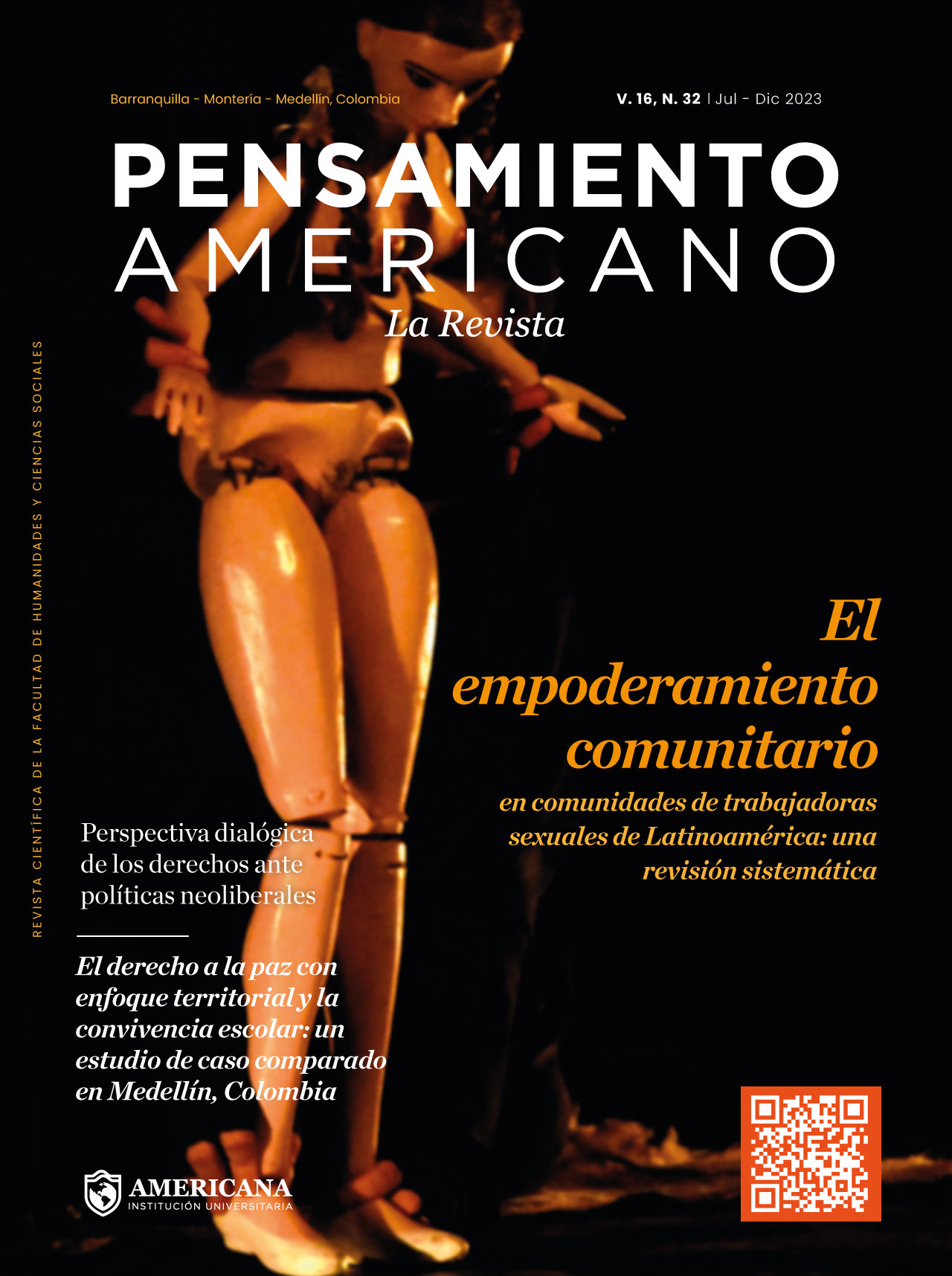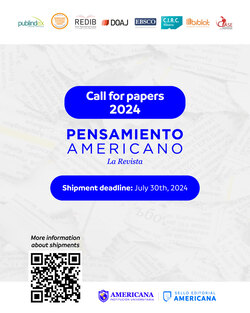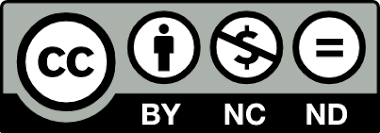Memory and Monument. The historical site of the battle of Boyacá
DOI:
https://doi.org/10.21803/penamer.16.32.564Keywords:
Collective memory, Territory, Monument, RepresentationAbstract
The establishment of the national memory starts from the place of the events, for this reason the Boyacá Field is the scene of the collective memory, where the ideology of the nation is built The objective is to present how the historical narratives are established through the monument as part of national history, legitimizing the representation of official policies on national memory through monumental representations. The period under study is 1819 to 2019. It raises a discussion about the symbolic aspects that have allowed the prevalence of this historical complex over time, perpetuating these narratives as cultural representations. The proposal is based on the historical perspective and its cultural significance through stages associated with the construction of monuments and how it makes visible the construction of the hero. As a conclusion, a debate is raised about the construction of an official celebratory system with a discourse that is presented through the archetypes of memory in monuments that respond to the ordering of official history with a place of memory that recognizes the importance of collective memory.
Downloads
References
A.G.N. sección mapas y planos, m. n.-1. (1825). Provincia de Tunja. Carta geográfica del Cantón. Tunja: Archivo general de la nación.
Betancourt Mendieta, A. (2007). HISTORIA Y NACIÓN: TENTATIVAS DE LA ESCRITURA DE LA HISTORIA EN COLOMBIA. En A. Betancourt Mendieta, HISTORIA Y NACIÓN: TENTATIVAS DE LA ESCRITURA DE LA HISTORIA EN COLOMBIA. (pág. 40). Medellín: UNAM.
Bloch, M. (2000). Introducción a la historia. Bogotá: Fondo de cultura económica (FCE).
Bloch, M. (2000). Introducción a la historia. En M. Bloch, Introducción a la historia (pág. 32). Bogotá: Fondo de cultura económica (FCE).
Burke, P. (2012). Historia social del conocimientoII: De la enciclopedia a la wikipedia. Madrid España: Paidos.
Chartier, R. (2007). La Historia o la lectura del tiempo. En R. Chartier, La Historia o la lectura del tiempo (pág. 88). Madrid, España: Gedisa.
Colombiana, A. g. (Marzo- Abril de 1940). Archivo general de la nación Colombiana . Obtenido de Boletín de Historia y Antiguedades 310y 311. Vol XXVII: https://biblioteca.archivogeneral.gov.co/pmb/opac_css//index.php?lvl=bulletin_display&id=729
Cuellar, G. (1930). Banco de la Repùblica. Obtenido de Banco de la Repùblica: https://babel.banrepcultural.org/digital/collection/p17054coll19/id/1764/
Guerrero, J., & Gracia, L. W. (2015). La segunda batalla de Boyacá: entre la identidad nacional y la destrucción de la memoria. En J. Guerrero Barón, & L. W. Gracia, La segunda batalla de Boyacá: entre la identidad nacional y la destrucción de la memoria (pág. 159). Tunja: UPTC.
Halbwachs, M. (2013). Memoria colectiva y memoria histórica. REIS, 69-95.
Le Corbusier, & Sert, J. L. (1941). Carta de Atenas. Paris.
Montaner , J. M. (2011). Arquitectura y crítica en latinoamerica. En J. M. Montaner, Arquitectura y crítica en latinoamerica (pág. 50). Nobuko.
Montaner, J. (2011). Arquitectura y crítica en Latinoamérica. Ediciones de la U.
Moros, R. (1919). LEE. Divulga y promueve cultura y conocimiento. Obtenido de LEE 186. Héroes o villanos IV. La sucursal del cielo: https://leefundente.wordpress.com/tag/2fundente-2/page/2/
Nacional, U. (2020). Estudio de diseñoeintervención para el mejoramiento de sitiohistórico de la batalla de Boyacá. En U. Nacional, Estudio de diseñoeintervención para el mejoramiento de sitiohistórico de la batalla de Boyacá (pág. Capitulo 16). Bogotá: Universidad Nacional.
Perez, A. C. (2010). La independencia como gesta heroica en el continuo historico nacional: la " densidad de la representaciòn"1880-1909. Bogota: Universidad Javeriana.
Pérgolis , J. C. (2000). Imaginarios y representaciones, Bogotá: 1950-2000. Forma urbana y vida cotidiana. Bogotá: Universidad Católica De Colombia / Distribuido Por Lemoine Editores.
Pérgolis, J. C. (2000). Imaginarios y representaciones, Bogotá: 1950-2000. Forma urbana y vida cotidiana. En J. C. Pérgolis, Imaginarios y representaciones, Bogotá: 1950-2000. Forma urbana y vida cotidiana (pág. 11). Bogotá: 2342.
Rodríguez, J. V., & Borrero F, L. D. (2014). La batalla del pantano de vargas. 25 de julio de 1819, paipa, boyacá, Nueva granada. Las otras historias del pasado. En J. V. Rodríguez Cuenca, & L. D. Borrero F, La batalla del pantano de vargas. 25 de julio de 1819, paipa, boyacá, Nueva granada. Las otras historias del pasado (pág. 96). Bogotá: Universidad Nacional de Colombia.
White, H. (1992). Metahistoria: La Imaginación Histórica en la Europa del Siglo XIX. México: Fondo De Cultura Económica.
Downloads
Published
Versions
- 2023-12-30 (3)
- 2024-02-05 (1)
Issue
Section
License
Copyright (c) 2023 Pensamiento Americano

This work is licensed under a Creative Commons Attribution-NonCommercial-NoDerivatives 4.0 International License.
The author or authors of an article accepted for publication in the Journal Pensamiento Americano will transfer all of the patrimonial rights to the American University Corporation free of charge, within which are included: the right to edit, publish, reproduce and distribute both print media as digital, in addition to include in article in international indexes and / or databases, likewise, the Editorial Seal is authorized to use the images, tables and / or any graphic material presented in the article for the design of covers or posters from the same magazine. By assuming the patrimonial rights of the article, it may not be partially or totally reproduced in any printed or digital media without its express permission.
AUTHORITY ASPECTS
For the Pensamiento Americano Journal, all the authors of an article have made substantial contributions to the research and the manuscript, and they share the responsibility when the article presents errors, fraud in some way or violations of copyright.
After submitting an article, the journal does not accept the addition, deletion or change in the order of the authors, in addition we reserve the right to release the article when it has been submitted to the journal and under no circumstances will American Thought accept the article. withdrawal of an article during any phase of the editorial process






